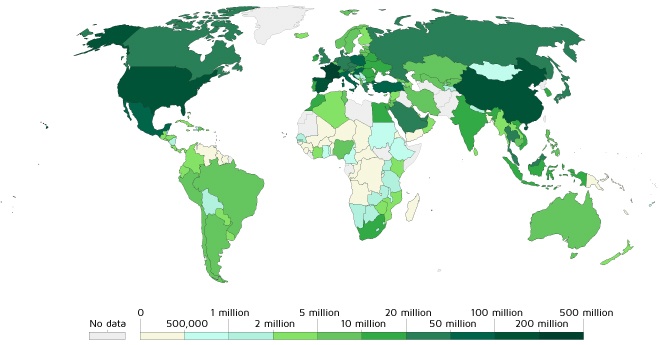Tourism is the process of travelling from one location to another for a particular reason such as a vacation, a business conference, or perhaps even for a health or medical purpose. The tourism industry somewhat differs from normal industry sectors that can be relatively easily highlighted and analyzed by a closer look at their outputs. However, tourism is characterized by a multitude of intersectoral and cross-cutting activities such as accommodation and transportation, health, and cultural diversity.
Many counties depend on tourism as a key source of income with hundreds of millions of tourists traveling around the globe for various purposes therefore until recent events the global tourism industry continued to flourish. However, firstly the novel coronavirus pandemic brought the global tourism industry to an unprecedented halt with the imposed travel restrictions affecting access to international travel as well as impacting upon world economies. Secondly, the current Russian attack on Ukraine in Eastern Europe and the sanctions unleashed against this country may jeopardize the fragile economic recovery and prevent the tourism industry from getting back on its feet.
For reference, in 2019 the Travel & Tourism sector contributed 10.4% to global GDP; a share that decreased to 5.5% in 2020 due to the ongoing movement restrictions.
WTTC numbers reflect the fact that tourism was the sector most affected by the pandemic with the industry recording a GDP contribution reduction of a staggering 49.1% in 2020 compared to 2019 which represents a loss of almost US$4.7 trillion.
What is the global tourism industry?
In its simplest form, tourism can be defined as the process of traveling from one’s place of residence to another for a number of reasons such as a vacation, attendance at a business conference, or health purposes among others. Thus, global tourism involves a range of major industries that facilitate these activities and benefit from the expenditure. For instance, accommodation services, international transport, rental services, and travel agencies to name just a few all facilitate the development of the global tourism industry.
Tourism statistics by country
This map shows countries listed by the number of arriving tourists. According to Our World In Data at the very beginning of the pandemic in 2019, France was the country that received the most arrivals, a staggering 212 million.
Fig.1. International tourism: number of arrivals, 2019

Source: Our World In Data
Tourism statistics comparison 2020 vs 2021
According to UNWTO, the global tourism level enjoyed a significant increase in the third quarter of 2021 in comparison to the same period in 2020.
The latest edition of the UNWTO World Tourism Barometer states that “International tourist arrivals increased by 58% in July-September 2021 compared to the same period of 2020.”
However, “Between January and September 2021, worldwide international tourist arrivals stood at -20% compared to 2020.”
UNWTO Secretary-General Zurab Pololikashvili stated:
“Data for the third quarter of 2021 is encouraging. However, arrivals are still 76% below pre-pandemic levels and results across the different global regions remain uneven.”
Fig.2. International tourist arrivals (% change over 2019)
Source: UNWTO
Key Takeaways:
- Europe(-53%) and the Americas (-60%) enjoyed a slight improvement in Q3 2021
- Arrivals in Asia and the Pacific were down 95% compared to 2019
- Africa and the Middle East recorded falls of 74% and 81% respectively in the third quarter compared to 2019
- The total contribution to gross domestic product (GDP) worldwide of the tourism industry from 2006 to 2020
The total contribution of GDP from the global tourism industry has seen a steady rise since 2006 with 2019 marking the peak at US$9.2 billion. In comparison, the amount dropped by half to US$4.7 billion right around the time of the start of the pandemic in 2020. Travel restrictions around the world then affected tourism industry revenues on a global scale.
Fig.3. Total contribution of travel and tourism to gross domestic product (GDP) worldwide from 2006 to 2021
Source: Statista
Tourism revenue by countries
This chart shows data from the World Bank and the World Tourism Organization regarding international tourism receipts in US$ for 2019.
Fig.4. International tourism, receipts (current US$)
Source: World Bank
What’s next
Because the emergence of new variants of COVID-19 in the near future is very likely, UNWTO Secretary-General, Zurab Pololikashvili, pointed out that:
“We cannot let our guard down and need to continue our efforts to ensure equal access to vaccinations, coordinate travel procedures, make use of digital vaccination certificates to facilitate mobility, and continue to support the sector.”
The resumption of international travel to its previous levels depends by and large on the coordinated response from countries in terms of travel restrictions, the maintenance of existing health and safety protocols, and the implementation of effective communication channels to restore consumer confidence.

